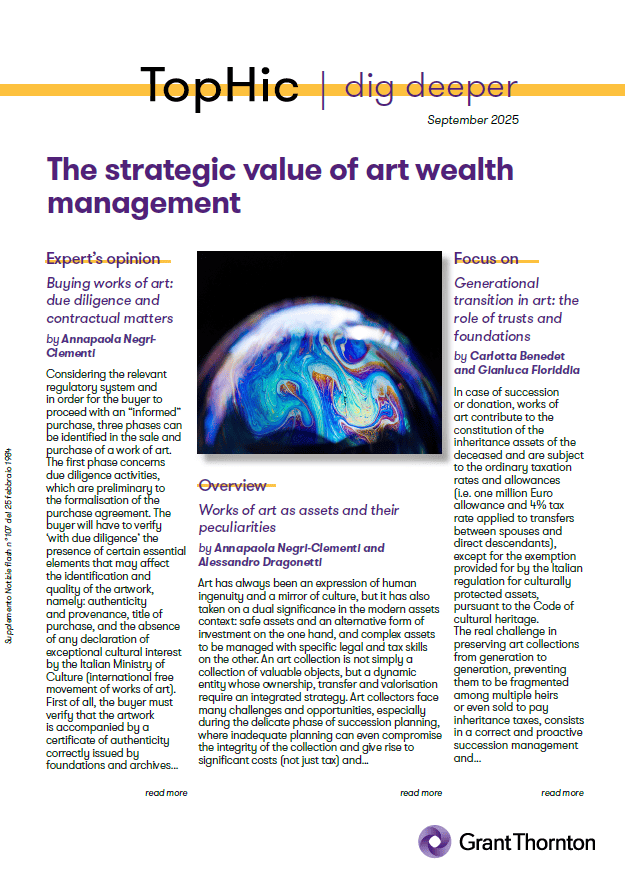
Art has always been an expression of human ingenuity and a mirror of culture, but it has also taken on a dual significance in the modern assets context: safe assets and an alternative form of investment on the one hand, and complex assets to be managed with specific legal and tax skills on the other. An art collection is not simply a collection of valuable objects, but a dynamic entity whose ownership, transfer and valorisation require an integrated strategy. Art collectors face many challenges and opportunities, especially during the delicate phase of succession planning, where inadequate planning can even compromise the integrity of the collection and give rise to significant costs (not just tax) and family disputes. It is therefore advisable to properly understand the regulatory framework, tax implications, and the most advanced legal tools to ensure that a passion for art can translate into a lasting and well-managed legacy.
Framing an art collection as an actual asset class means recognising the peculiarities that set it apart from traditional financial instruments. Unlike the more common financial investments, artworks are illiquid, heterogeneous assets whose value is determined by a complex interplay of factors: authenticity, provenance, state of preservation, historical and artistic importance, and, last but not least, changing market trends. This intrinsic specific nature requires a multidisciplinary management approach that takes into account both the legal and tax implications and the ownership and provenance of the work of art, as well as any restrictions that may limit its circulation should the work be considered of historical or cultural interest.
Art lawyers and art wealth managers thus become key professionals, alongside legal and tax advisors. Through legal and artistic due diligence, they actually guide collectors towards informed and secure sound, which are fundamental in terms of succession planning.
Thorough due diligence (preferably upon purchase) is essential to ascertain the ownership and provenance of the artwork and ensure that it is not the result of theft, despoiling or illegal exportation. Documents such as certificates of authenticity, expertise, and a solid chain of ownership (provenance) are not mere accessories, but rather integral elements of the work of art’s value and legitimacy.
From a tax perspective, while the Italian lawmaker has introduced significant incentives for investing in works of art (such as reducing VAT to 5% and exempting capital gains from taxation in the case of sales of artworks purely for cultural purposes and personal enjoyment), on the other hand, an incorrect management and asset planning of the collection can lead to significant tax and other consequences.
It is actually in the context of succession planning that the greatest complexities arise: the transfer of an art collection by inheritance (mortis causa) or donation can give rise to significant liabilities in terms of inheritance and gift tax. Although the law provides for specific exemptions for listed cultural assets, access to these benefits is subject to specific conditions, which require careful and advanced planning and a lengthy administrative process for recognising the asset’s cultural interest.
The absence of a clear strategy can lead to the fragmentation of the collection among multiple heirs, forced sales to pay taxes and, ultimately, the dispersion of a heritage built with passion and expertise.
